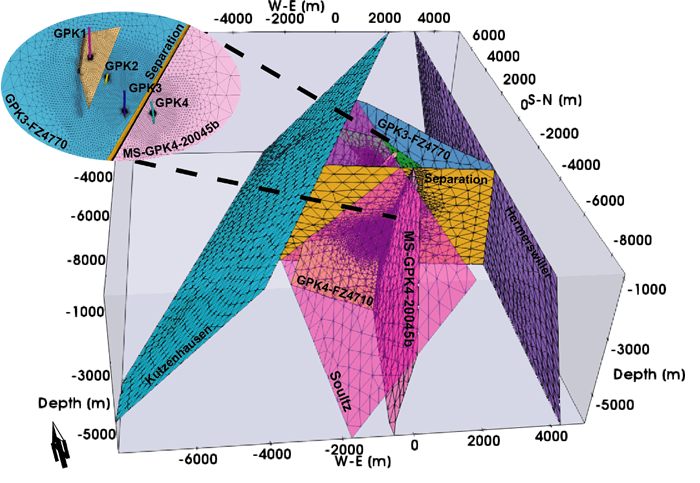Reservoir Modeling
The processes in the subsurface are very complex, especially with regard to geothermal issues. The extraction of geothermal fluid and reinjection of the cooled fluid not only changes the temperature of the surrounding rock, but also a number of other parameters. Due to the pressure reduction at the production well and the pressure increase at the reinjection well, the stresses in the subsurface change, additionally thermal stress changes occur. The changes in temperature and pressure are accompanied by chemical interactions between the dissolved minerals and the reservoir rock as well as the above-ground plant components.
To understand the effects of these highly coupled processes and their impact on the geothermal reservoir, numerical methods are of great importance. The physical and chemical processes are described by differential equations and the established system of equations is solved by mathematical methods such as the finite element method. Numerical modelling can thus be used to analyse the processes taking place under varying subsurface parameters and conditions.
Depending on the objective of the investigations, different modelling tools are used. These include MOOSE/TIGER for reservoir modelling, Abaqus for mechanical problems, TOUGHREACT, PhreeqC and Elmer for geochemical problems and SOFI3D for seismic wave propagation.




 247
247